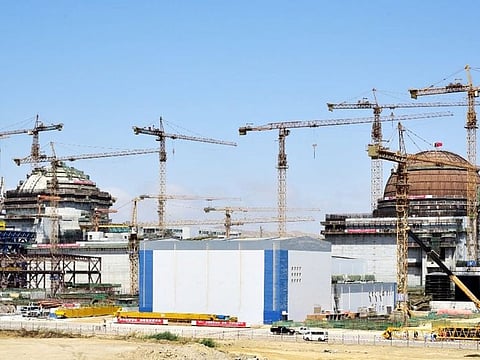Pakistan plans 40,000MW nuclear energy by 2050 to meet electricity demands
The 1100MW unit K-3 of Karachi nuclear power plant recently became operational

Islamabad: Pakistan is on its way to adapting to zero-emission clean energy with a planned nuclear power generation capacity of 40,000 megawatts (MW) by 2050.
The country has envisaged a nuclear power generation capacity of 40,000MW under its Nuclear Energy Vision 2050 with a total of 32 nuclear power plants to meet one-fourth of the country’s energy needs.
PM’s special assistant on climate change Malik Amin Aslam has said that Pakistan intends to adapt to the zero-carbon emission goal by 2050 in energy by utilizing all types of renewable and low-carbon sources. “We will make optimal use of our wind, hydel, solar and nuclear resources to meet the goals set by Conference of the Parties (COP26) recently held in Glasgow,” he said.
Pakistan has planned a massive clean energy transition to shifting energy production away from fossil fuels to clean sources such as hydro, wind, solar and nuclear power that release little to no greenhouse gases.
K-3 unit of Karachi power plant
On February 21, 1100MW unit K-3 of the Karachi nuclear power plant (KANUPP) became operational. The new unit will soon be connected to the national grid and begin commercial operation to provide clean and affordable electricity to millions. In March 2021, Pakistan connected its first 1100MW nuclear power plant unit to the national power grid.
Pakistan has six operational nuclear power stations and the successful addition of K-3 would significantly improve the country’s nuclear power generating capacity. The new units would help meet the electricity demand, which is around 25,000MW in the summertime peak and 12,000MW in the winter.
Pakistan’s energy mix
Pakistan’s current energy mix is formed of about 58 per cent fossil fuels, 30 per cent hydropower and 10 per cent renewables and nuclear power. However, the country has tremendous potential for producing renewable energy, which is being explored extensively. Prime Minister Imran Khan has vowed that by 2030 Pakistan would produce 60 per cent of its electricity from renewable sources.
Sign up for the Daily Briefing
Get the latest news and updates straight to your inbox


